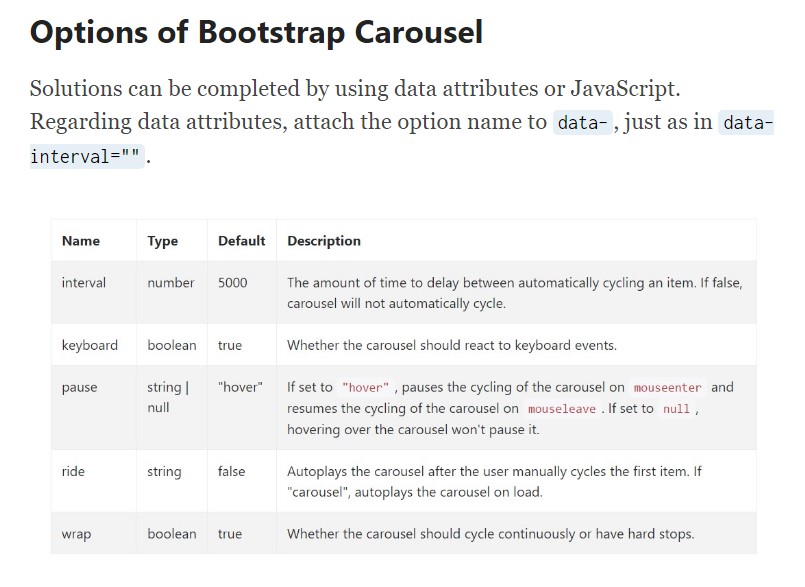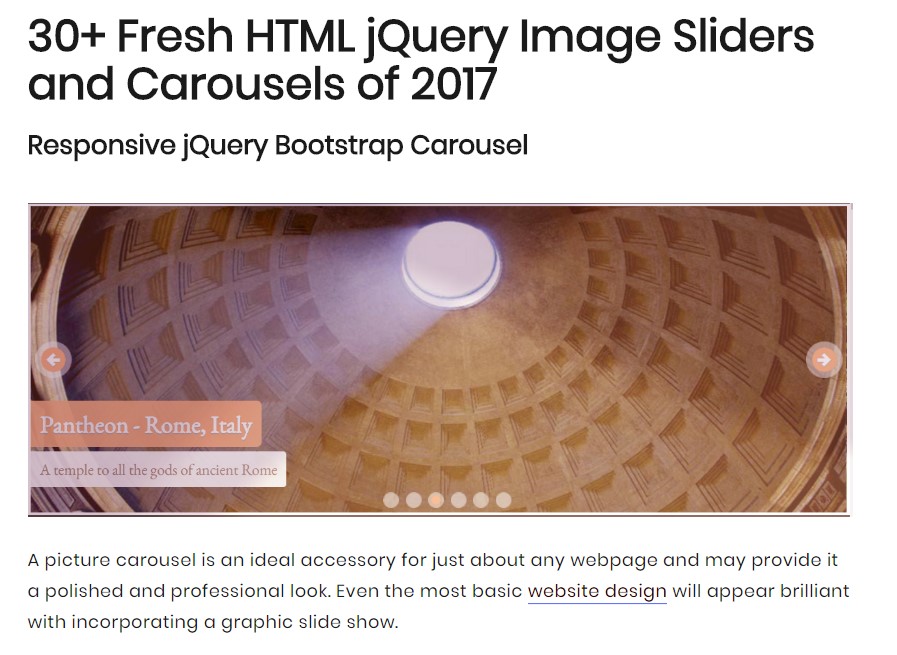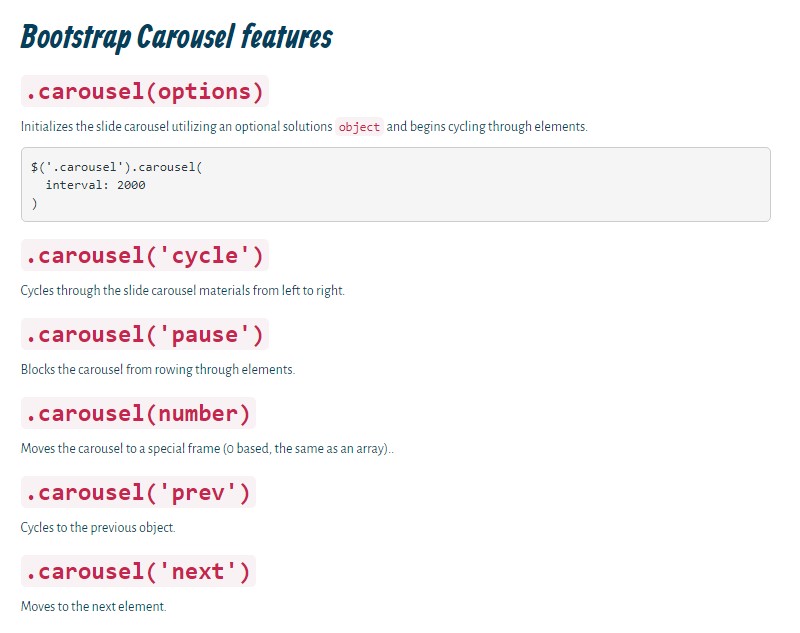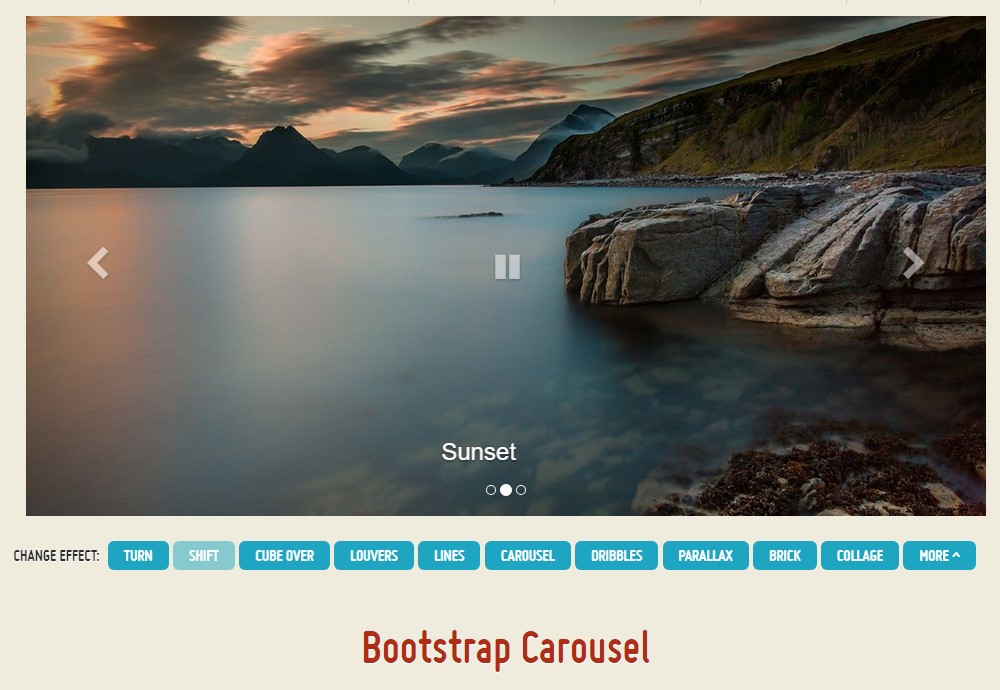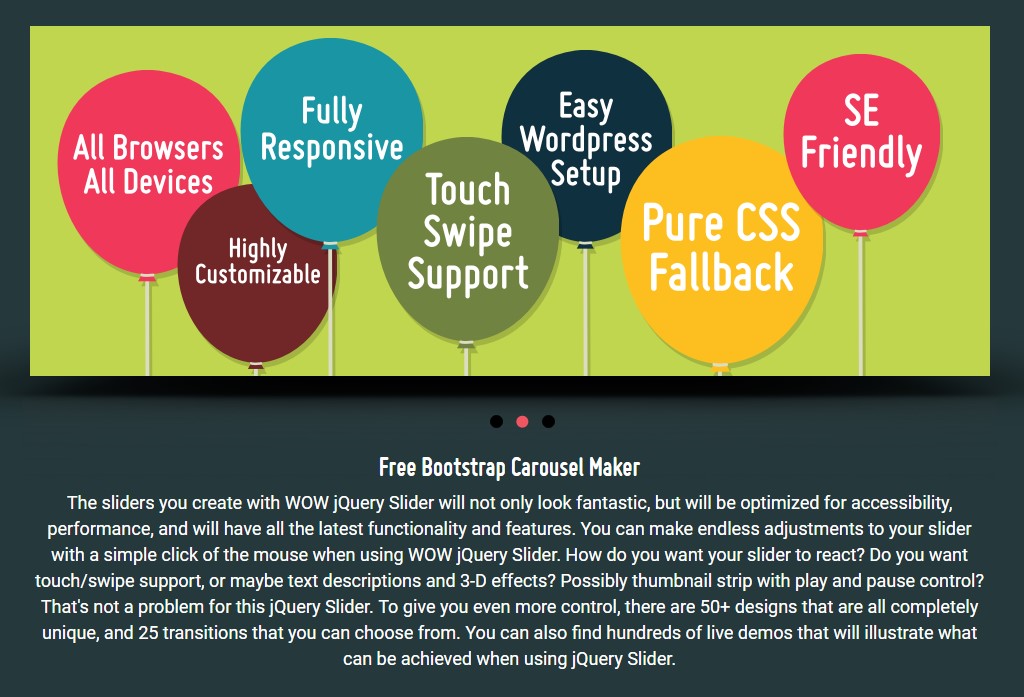Bootstrap Carousel Position
Overview
Exactly who doesn't appreciate shifting images along with some interesting subtitles and text message making clear what they represent, far better relaying the text message or why not actually much more useful-- also featuring a handful of buttons as well asking the site visitor to have some activity at the very beginning of the web page due to the fact that these kinds of are usually applied in the start. This has been certainly dealt with in the Bootstrap system through the integrated in carousel component which is absolutely supported and extremely easy to get together with a clean and plain structure.
The Bootstrap Carousel Mobile is a slide show for cycling throughout a set of content, constructed with CSS 3D transforms and a bit of JavaScript. It coordinates with a set of illustrations, text, or custom markup. It additionally incorporates help for previous/next regulations and signs.
The way to use the Bootstrap Carousel Slide:
All you need is a wrapper component along with an ID to contain the whole carousel component holding the .carousel and also-- .slide classes ( in the case that the second one is omitted the images will certainly just change without having the nice sliding shifting) and a data-ride="carousel" property in the event that you prefer the slide show to immediately start at webpage load. There really should also be some other feature in it holding the carousel-inner class to include the slides and finally-- wrap the images right into a .carousel-inner component.
For example
Slide carousels don't instantly change slide sizes. Because of this, you may require to work with extra utilities or custom-made varieties to accurately size material. While carousels support previous/next directions and signs, they're not clearly required. Customize and provide considering that you see fit.
Be sure to set up a original id on the .carousel for extra commands, especially in case you're employing multiple slide carousels in a single web page.
Solely slides
Here is a Bootstrap Carousel Example along with slides solely . Keep in mind the existence of the .d-block and .img-fluid on slide carousel images to keep browser default pic arrangement.

<div id="carouselExampleSlidesOnly" class="carousel slide" data-ride="carousel">
<div class="carousel-inner" role="listbox">
<div class="carousel-item active">
<div class="img"><img class="d-block img-fluid" src="..." alt="First slide"></div>
</div>
<div class="carousel-item">
<div class="img"><img class="d-block img-fluid" src="..." alt="Second slide"></div>
</div>
<div class="carousel-item">
<div class="img"><img class="d-block img-fluid" src="..." alt="Third slide"></div>
</div>
</div>
</div>Also
You can additionally set up the time each slide gets featured on web page through providing a data-interval=" ~ number in milliseconds ~" property to the main . carousel wrapper in the event that you desire your images being actually viewed for a various amount of time in comparison to the predefined by default 5 secs (5000 milliseconds) period oftime.
Slide show with regulations
The navigating between the slides gets accomplished by defining two link elements with the class .carousel-control plus an excess .left and .right classes for pace them as needed. For target of these must be inserted the ID of the major slide carousel element itself and some properties such as role=" button" and data-slide="prev" or next.
This so far refers to make sure the regulations will do the job correctly but to additionally assure the website visitor realises these are there and knows what exactly they are doing. It also is a good idea to set some <span> features within them-- one particular along with the .icon-prev plus one-- having .icon-next class together with a .sr-only revealing to the display readers which one is prior and which one-- following.
Now for the necessary aspect-- positioning the concrete images that need to materialize inside the slider. Every picture feature need to be wrapped within a .carousel-item which is a new class for Bootstrap 4 Framework-- the previous version used to incorporate the .item class which wasn't a lot intuitive-- we guess that's the reason why right now it's replaced .
Incorporating in the previous and next directions:

<div id="carouselExampleControls" class="carousel slide" data-ride="carousel">
<div class="carousel-inner" role="listbox">
<div class="carousel-item active">
<div class="img"><img class="d-block img-fluid" src="..." alt="First slide"></div>
</div>
<div class="carousel-item">
<div class="img"><img class="d-block img-fluid" src="..." alt="Second slide"></div>
</div>
<div class="carousel-item">
<div class="img"><img class="d-block img-fluid" src="..." alt="Third slide"></div>
</div>
</div>
<a class="carousel-control-prev" href="#carouselExampleControls" role="button" data-slide="prev">
<span class="carousel-control-prev-icon" aria-hidden="true"></span>
<span class="sr-only">Previous</span>
</a>
<a class="carousel-control-next" href="#carouselExampleControls" role="button" data-slide="next">
<span class="carousel-control-next-icon" aria-hidden="true"></span>
<span class="sr-only">Next</span>
</a>
</div>Putting into action indications
You can absolutely in addition provide the signs to the slide carousel, alongside the controls, too
In the main .carousel element you could certainly in addition have an required listing for the carousel indicators by having the class of .carousel-indicators along with several list items each bringing the data-target="#YourCarousel-ID" data-slide-to=" ~ appropriate slide number ~" properties on which the very first slide number is 0.

<div id="carouselExampleIndicators" class="carousel slide" data-ride="carousel">
<ol class="carousel-indicators">
<li data-target="#carouselExampleIndicators" data-slide-to="0" class="active"></li>
<li data-target="#carouselExampleIndicators" data-slide-to="1"></li>
<li data-target="#carouselExampleIndicators" data-slide-to="2"></li>
</ol>
<div class="carousel-inner" role="listbox">
<div class="carousel-item active">
<div class="img"><img class="d-block img-fluid" src="..." alt="First slide"></div>
</div>
<div class="carousel-item">
<div class="img"><img class="d-block img-fluid" src="..." alt="Second slide"></div>
</div>
<div class="carousel-item">
<div class="img"><img class="d-block img-fluid" src="..." alt="Third slide"></div>
</div>
</div>
<a class="carousel-control-prev" href="#carouselExampleIndicators" role="button" data-slide="prev">
<span class="carousel-control-prev-icon" aria-hidden="true"></span>
<span class="sr-only">Previous</span>
</a>
<a class="carousel-control-next" href="#carouselExampleIndicators" role="button" data-slide="next">
<span class="carousel-control-next-icon" aria-hidden="true"></span>
<span class="sr-only">Next</span>
</a>
</div>Provide some underlines additionally.
Include underlines to your slides simply by using the .carousel-caption element inside any .carousel-item.
In order to add a few subtitles, information together with buttons to the slide include an added .carousel-caption component beside the image and insert all of the content you really need straight inside it-- it will beautifully slide additionally the illustration itself.
They have the ability to be efficiently covered on smaller viewports, just as shown below, together with extra display functions. We cover all of them initially through .d-none and provide them back on medium-sized devices with .d-md-block.

<div class="carousel-item">
<div class="img"><img src="..." alt="..."></div>
<div class="carousel-caption d-none d-md-block">
<h3>...</h3>
<p>...</p>
</div>
</div>Extra tips
A cool method is anytime you need a url or possibly a tab in your webpage to guide to the carousel on the other hand at the same time a certain slide inside it for being viewable at the moment. You have the ability to really accomplish this simply by appointing onclick=" $(' #YourCarousel-ID'). carousel( ~ the needed slide number );" property to it. Simply be sure you have indeed thought about the slides numbering literally begins with 0.
Application
By means of information attributes
Utilize data attributes to conveniently direct the placement of the slide carousel .data-slide takes the keywords prev as well as next, which alters the slide setting relative to its own existing location. As an alternative, use data-slide-to to pass on a raw slide index to the carousel data-slide-to="2", that changes the slide placement to a particular index beginning with 0.
The data-ride="carousel" attribute is put to use to mark a carousel as animating starting off at webpage load. It can not be used in combination with ( redundant and unnecessary ) particular JavaScript initialization of the same slide carousel.
By means of JavaScript
Employ slide carousel by hand by using:
$('.carousel').carousel()Options
Options can possibly be passed by using data attributes or JavaScript. Regarding data attributes, append the option name to data-, just as in data-interval="".

Practices
.carousel(options)
Initializes the slide carousel through an alternative solutions object and begins cycling through stuffs.
$('.carousel').carousel(
interval: 2000
).carousel('cycle')
Cycles through the slide carousel materials from left to right.
.carousel('pause')
Intercepts the slide carousel from cycling through stuffs.
.carousel(number)
Moves the carousel to a particular frame (0 based, just like an array)..
.carousel('prev')
Cycles to the previous thing.
.carousel('next')
Cycles to the following thing.
Events
Bootstrap's carousel class presents two activities for hooking into carousel useful functionality. Each of the events have the following added properties:
- direction: The direction in which the slide carousel is moving (either "left" or else "right").
- relatedTarget: The DOM component which is being actually slid in to place just as the active thing.
All of the carousel occasions are launched at the carousel itself (i.e. at the <div class="carousel">).

$('#myCarousel').on('slide.bs.carousel', function ()
// do something…
)Final thoughts
So primarily this is the solution the carousel element is designed in the Bootstrap 4 framework. It is certainly really easy as well as straightforward . However it is very an useful and beautiful approach of presenting a lot of web content in less space the slide carousel component really should however be worked with cautiously thinking of the legibility of { the text message and the visitor's convenience.
An excessive amount of illustrations might be missed to be discovered by scrolling down the webpage and when they slide very speedily it could become difficult certainly seeing all of them or check out the text messages which in turn might in time misinform as well as anger the webpage viewers or perhaps an essential call to action could be missed-- we certainly really don't want this stuff to take place.
Review a couple of on-line video information relating to Bootstrap Carousel:
Related topics:
Bootstrap Carousel official information

Bootstrap 4 Сarousel issue

